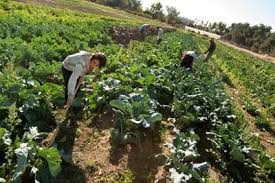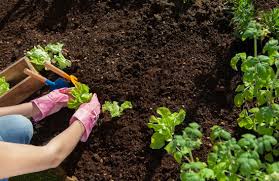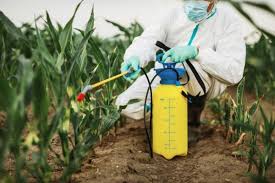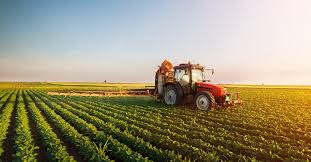Agricultural systems encompass the various methods and practices used in farming to produce food, fiber, and other products.
Agricultural systems are the frameworks through which farming activities are organized and carried out.
They include the interactions between crops, livestock, soil, water, climate, and technology, shaping how agricultural products are produced and distributed.
Understanding agricultural systems is crucial for improving efficiency, sustainability, and food security.
Definition of Agricultural Systems
An agricultural system can be defined as a set of interconnected components and processes involved in the production of agricultural goods. These components include:
1. Biological Components: The living organisms involved, such as plants, animals, and microorganisms.
2. Physical Components: The non-living elements like soil, water, climate, and equipment.
3. Human Components: The people involved in farming, including farmers, laborers, and agronomists.
4. Economic Components: The financial aspects, including market access, costs, and profitability.
5. Social Components: The cultural and social factors influencing agricultural practices and policies.
Historical Development of Agricultural Systems

1. Traditional Agriculture: Early human societies practiced subsistence farming, focusing on growing enough food for their families. This involved shifting cultivation and pastoralism.
2. Agricultural Revolution: Around 10,000 years ago, the Agricultural Revolution marked the shift to settled farming, with the domestication of plants and animals, leading to increased food production.
3. Industrialization: The 18th and 19th centuries saw the Industrial Revolution, which introduced machinery and advanced farming techniques, significantly increasing productivity.
4. Green Revolution: The mid-20th century introduced high-yield varieties, synthetic fertilizers, and pesticides, boosting crop production, particularly in developing countries.
5. Modern Agriculture: Today, agricultural systems are characterized by technological advancements, including precision agriculture, biotechnology, and sustainable practices to address environmental challenges.
Types of Agricultural Systems
Various agricultural systems are used worldwide, each with unique characteristics and practices. Here are some key types:
1. Subsistence Agriculture: Farmers grow food primarily for their own consumption, with little surplus for sale.
2. Commercial Agriculture: Large-scale production of crops and livestock for sale in local or international markets.
3. Organic Agriculture: Farming that avoids synthetic chemicals, focusing on natural methods for pest control and soil fertility.
4. Agroecology: An approach that integrates ecological principles into agricultural practices, promoting sustainability and biodiversity.
5. Permaculture: A system that seeks to create sustainable agricultural ecosystems by mimicking natural ecosystems.
Key Components of Agricultural Systems
Understanding the key components of agricultural systems is essential for optimizing production and sustainability. The main components include:
1. Soil Management: Healthy soil is crucial for crop production. Soil management practices focus on maintaining and improving soil fertility, structure, and health.
2. Water Management: Efficient water use is vital for agriculture. Water management practices help ensure adequate supply and quality of water for irrigation and livestock.
3. Crop Production Techniques: Different methods are employed to grow crops effectively. These techniques are tailored to specific crops and environmental conditions.
4. Livestock Management: Proper care and management of livestock are essential for meat, milk, and other animal products. Livestock management practices influence animal health and productivity.
Read Also: Prevention and Methods of Controlling Coccidiosis Among Chickens
Soil Management Practices

Effective soil management is critical for sustaining agricultural productivity. Here are some common practices:
1. Soil Testing: Regular testing helps determine nutrient levels and pH, allowing for tailored fertilization plans.
2. Crop Rotation: Rotating different crops each season improves soil structure and fertility by preventing nutrient depletion and reducing pest cycles.
3. Cover Cropping: Planting cover crops during off-seasons protects soil from erosion, enhances soil organic matter, and suppresses weeds.
4. Reduced Tillage: Minimizing soil disturbance through no-till or reduced tillage preserves soil structure, improves water retention, and enhances microbial activity.
5. Organic Amendments: Adding compost or manure enriches soil with nutrients and improves its overall health.
Water Management in Agriculture
Water management is essential for ensuring sufficient and efficient water supply for crops and livestock. Key practices include:
1. Irrigation Systems: Utilizing various irrigation methods (drip, sprinkler, flood) helps manage water distribution effectively based on crop needs.
2. Rainwater Harvesting: Collecting and storing rainwater provides an alternative water source for irrigation and livestock, especially in drought-prone areas.
3. Soil Moisture Monitoring: Using sensors or moisture meters helps farmers assess soil moisture levels and determine when to irrigate.
4. Efficient Water Use: Implementing practices that reduce water waste, such as scheduling irrigation during cooler times of day, enhances water efficiency.
5. Watershed Management: Protecting and managing watersheds ensures sustainable water supply and quality for agricultural use.
Crop Production Techniques
Different techniques are employed to enhance crop production. Here are some key methods:
1. Integrated Pest Management (IPM): Combining biological, cultural, and chemical methods to manage pests effectively while minimizing environmental impact.
2. Precision Agriculture: Utilizing technology such as GPS and data analytics to optimize planting, fertilization, and pest control based on specific field conditions.
3. Direct Seeding: Planting seeds directly into prepared soil reduces soil disturbance and improves seed-to-soil contact, promoting better germination.
4. Organic Farming: Employing natural methods for fertilization and pest control to produce crops without synthetic chemicals.
5. Hydroponics and Aquaponics: Soil-less growing methods that allow for efficient use of space and resources, particularly in urban environments.
Livestock Management Practices
Proper livestock management is crucial for maintaining animal health and productivity. Here are some essential practices:
1. Nutrition Management: Providing balanced diets that meet the nutritional needs of different livestock species enhances growth and production.
2. Health Monitoring: Regular health checks and vaccinations prevent disease outbreaks and promote animal welfare.
3. Breeding Programs: Selective breeding improves desirable traits such as growth rate, disease resistance, and reproductive performance.
4. Housing and Welfare: Providing appropriate housing conditions ensures animal comfort, reducing stress and improving productivity.
5. Pasture Management: Implementing rotational grazing and maintaining pasture health ensures adequate forage availability and soil health
Read Also: Time and Methods of Fertilizer Application on Crops
Integrated Pest Management

Integrated Pest Management (IPM) is a comprehensive approach to managing pests in agriculture. It combines various strategies to minimize pest damage while reducing the reliance on chemical pesticides. Here are some key elements of IPM:
1. Monitoring and Identification: Regularly monitoring fields for pest presence and accurately identifying pests helps in making informed management decisions.
2. Prevention Strategies: Implementing cultural practices, such as crop rotation and intercropping, can prevent pest infestations before they occur.
3. Biological Control: Utilizing natural predators or parasites to control pest populations reduces the need for chemical treatments.
4. Chemical Control: When necessary, using targeted and environmentally friendly pesticides minimizes harm to beneficial organisms and the ecosystem.
5. Evaluation: Regularly assessing the effectiveness of pest management strategies allows for adjustments and improvements in the IPM plan.
Role of Technology in Agricultural Systems
Technology plays a significant role in modern agricultural systems, enhancing efficiency, productivity, and sustainability. Some key technological advancements include:
1. Precision Agriculture: Utilizing GPS and remote sensing technologies allows farmers to monitor crop health, soil conditions, and pest activity accurately.
2. Data Analytics: Analyzing agricultural data helps farmers make informed decisions about planting, irrigation, and resource management.
3. Drones: Drones are used for aerial surveys, crop monitoring, and precision spraying, providing real-time data and improving efficiency.
4. Smart Irrigation Systems: These systems use sensors to optimize water use, ensuring crops receive the right amount of water while conserving resources.
5. Robotics: Automated machinery, such as robotic harvesters and planters, increases efficiency and reduces labor costs.
Economic Aspects of Agricultural Systems
Understanding the economic aspects of agricultural systems is vital for farmers and policymakers. Key considerations include:
1. Production Costs: Analyzing costs associated with seeds, fertilizers, labor, and equipment helps farmers determine profitability.
2. Market Access: Identifying and accessing markets for agricultural products is essential for ensuring a fair return on investment.
3. Financial Planning: Developing budgets and financial plans helps farmers manage resources effectively and make informed decisions.
4. Government Policies: Understanding agricultural subsidies, trade policies, and regulations can impact farm profitability and sustainability.
5. Risk Management: Implementing strategies to manage risks related to climate, pests, and market fluctuations is essential for financial stability.
Environmental Impact of Agricultural Practices
Agricultural practices can significantly impact the environment. It is crucial to understand these impacts to promote sustainability. Some key environmental considerations include:
1. Soil Health: Intensive farming practices can lead to soil degradation, nutrient depletion, and erosion, affecting long-term productivity.
2. Water Usage: Over-irrigation and inefficient water management can deplete water resources and affect local ecosystems.
3. Biodiversity: Monoculture practices can reduce biodiversity, impacting ecosystem health and resilience.
4. Chemical Use: The overuse of fertilizers and pesticides can lead to water pollution and harm beneficial organisms.
5. Climate Change: Agriculture contributes to greenhouse gas emissions, making it essential to adopt practices that reduce carbon footprints.
Do you have any questions, suggestions, or contributions? If so, please feel free to use the comment box below to share your thoughts. We also encourage you to kindly share this information with others who might benefit from it. Since we can’t reach everyone at once, we truly appreciate your help in spreading the word. Thank you so much for your support and for sharing!
Read Also: Measurement and Definition of the term water yield






